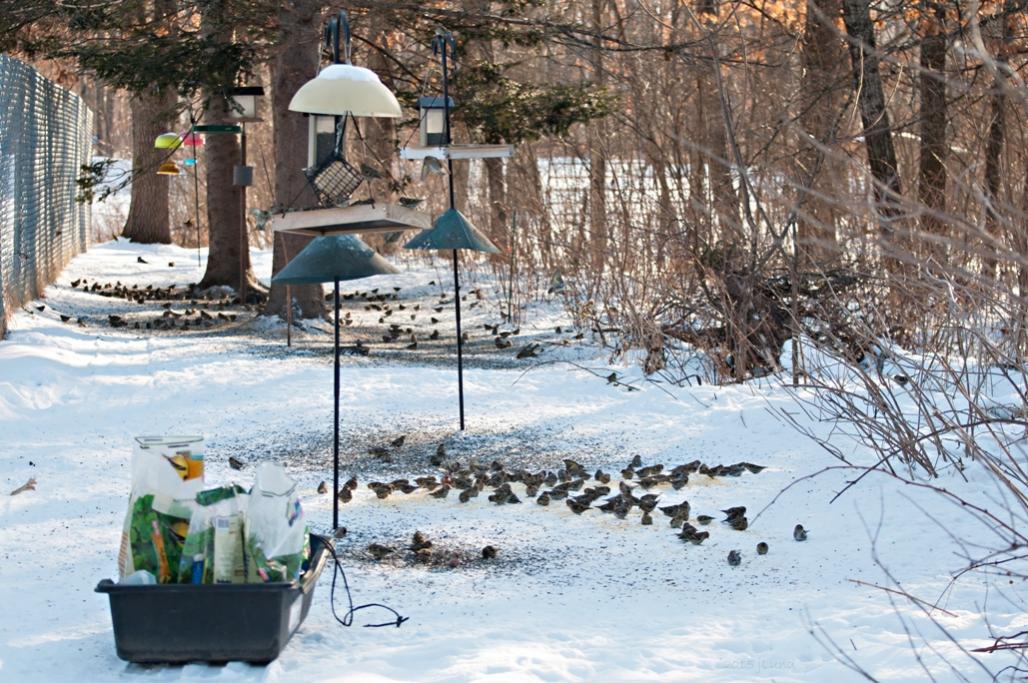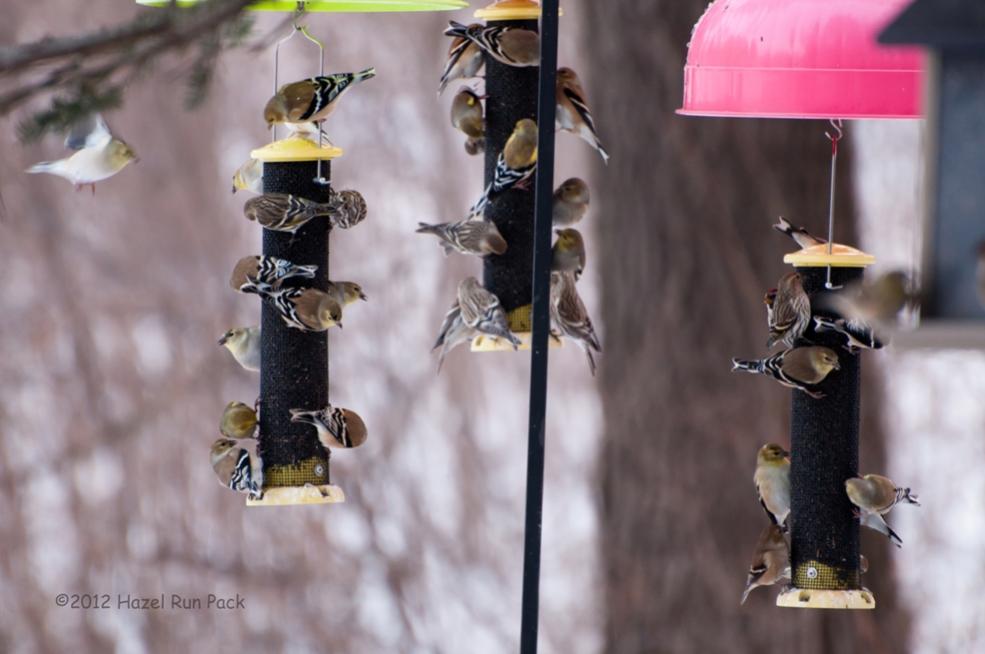They
will eventually get more accustomed to seeing movement on your side of the window and not flush so readily, but it will take a while. There are 'one-way' films you can put on a window--you can see through your side, but it's (usually) shiny on the other. Look for a film that's as dull as possible on the non-see-through side--a shiny surface may encourage the birds to challenge their reflection. You've heard of birds obsessed with their reflection in car mirrors?

Same deal... Another danger is that a reflective surface can increase the number of window hits you get--and they can be fatal for the birds. So if you end up with something shiny on the outside, make sure you put up silhouettes (on the
outside surface) to break up the reflection.
Another thing you can do is protect the feeders with covers so you can move them away from the house. We use large, inexpensive plastic bowls, inverted to make a dome, drill a hole through the center of the bottom for hardware with a hook on top and one below the dome. Use the top hook to hang the dome from a shepherd's hook and hang the feeder from the hook below. I wish I had a good picture of what I'm trying to describe, but maybe you can get an idea from this one:

The platform feeder closest to the camera has a large bowl over it--the mesh feeder and the blue feeder at the other end of the line both have smaller bowls over them. We use smaller bowls over thistle feeders, too...

The domes work pretty well unless it's very windy and wet--then nothing, not even being under the eaves, will help much.
As for when to taper off feeding--around here, the feeders are most used in very cold weather. Once it warms up in spring, there's a hiatus at the feeders from the end of migration until the broods are fledged. So typically, June and July are pretty quiet, with traffic picking up again in August when the young'uns show up. After fall migration, the feeders are quiet until it gets cold and/or snowy.
If you intend to only feed in winter, you can taper off as migration winds down in late May and start up again when the weather turns cold. Here, we feed all year.